Our research target is developing novel and challenging organic reactions based on molecular catalysis, with structural modification of transition metal catalysts and organocatalysts, We have achieved (1) selective synthesis of chiral molecules using asymmetric catalysts, (2) efficient construction of functional molecules through C-H bond activation, and (3) direct transformation of unactivated aromatic compounds using designed sulfide catalysts.
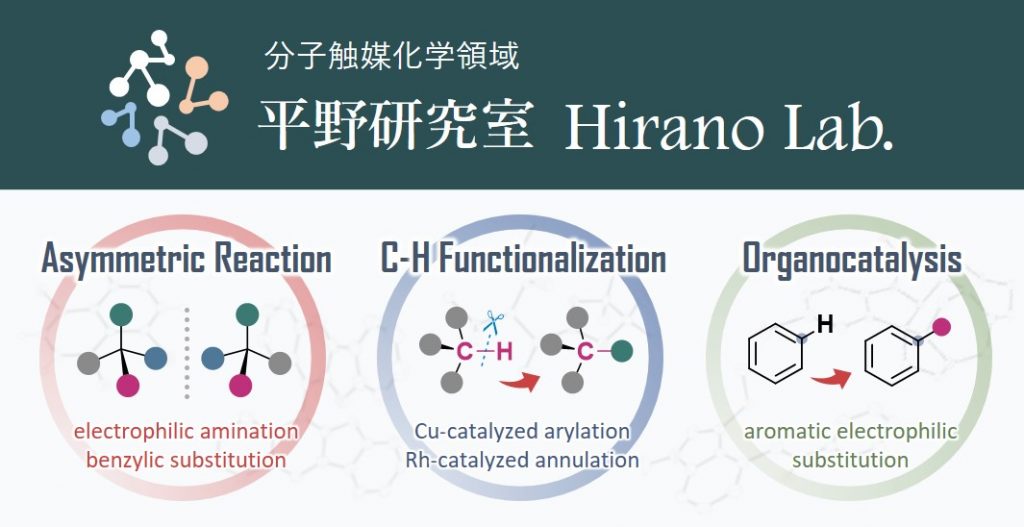
Our research is targeting toward designing unique and original metal complexes as catalysts for new organic transformations and clarifying their roles during the catalytic reactions. We especially focus on the development of transition metal complexes that can utilize readily available starting materials for complicated molecular synthesis with short reaction sequences and transform a targeted functional group within multi-functionalized organic molecules by using thermal, light, and electric energy. We also work on the catalyst development by combining both experimental and computational methods to optimize catalyst structures and elucidate the reaction mechanism.

We create functional materials that are useful for environmental protection and medical care and are friendly to humans and the environment, by using an appropriate combination of organic synthesis and molecular interactions. Currently we focus on (i) the development of molecular recognition materials that can efficiently remove harmful substances from water and oil, (ii) the development and application of micro- and nanostructures using self-organization of molecules, and (iii) the development and applications of highly efficient light-harvesting supramolecular assemblies.
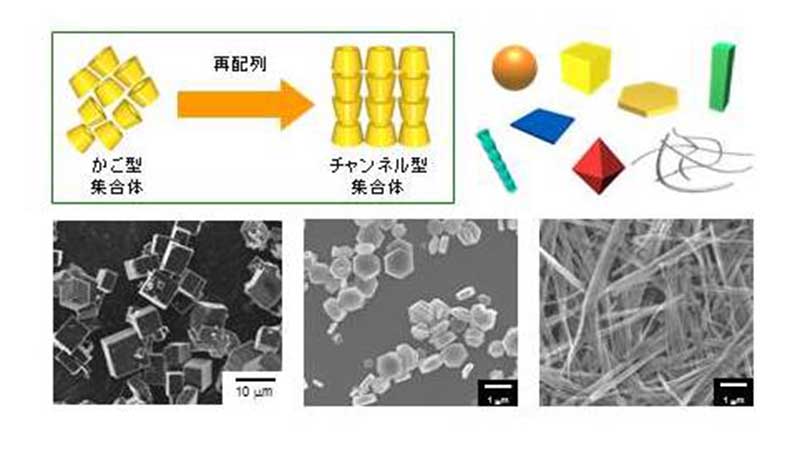
In our laboratory, we design and create high performance materials on the basis of molecular design in consideration of developments at an industrial level for the development of three dimensional (3D) tissues for drug discovery and regeneration medicine. The extracellular matrix (ECM) is the main component of cell microenvironments in all tissues and organs. ECM regulates cell microenvironments and various cell functions. Inspired by the function of ECM, we regulate microenvironment of cell surface using novel polymer materials to control cell functions for construction of 3D-tissues with functions and structures similar to natural tissues or organs.
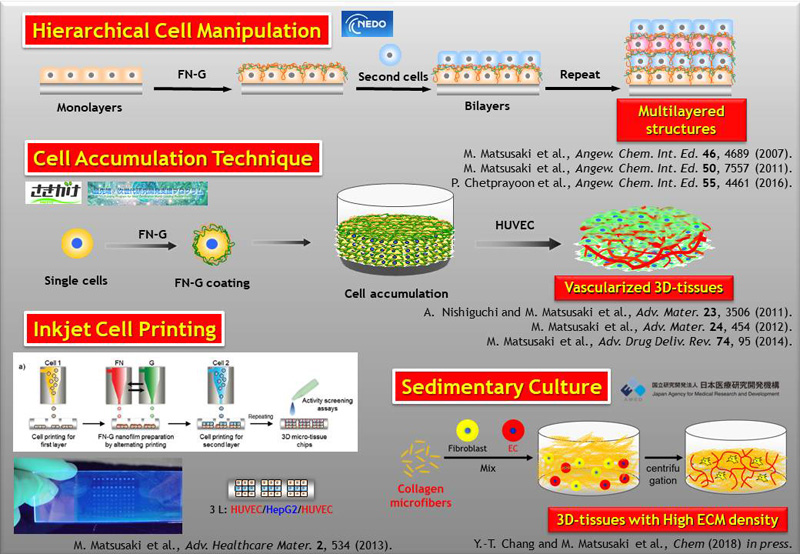
Our research is currently focused on designing a methodology for organic synthesis using novel organometallics and catalyst systems. Novel reactive organometallic species have been isolated and characterized based on spectroscopic methodology and X-ray crystallographic analysis. These species have been applied to the synthesis of functionalized organic compounds. Our group also focuses on utilizing characteristic Lewis acids in the conversion of carbon resources to valuable organic compounds. Metal complexes that have cage-shaped organic ligands are synthesized and used for new types of selective reactions for practical organic syntheses. We also target functionalized materials that are based on organic compounds with novel physical properties and special intramolecular interactions. All projects are supported by organic synthetic approaches that extend to various fields of chemistry.
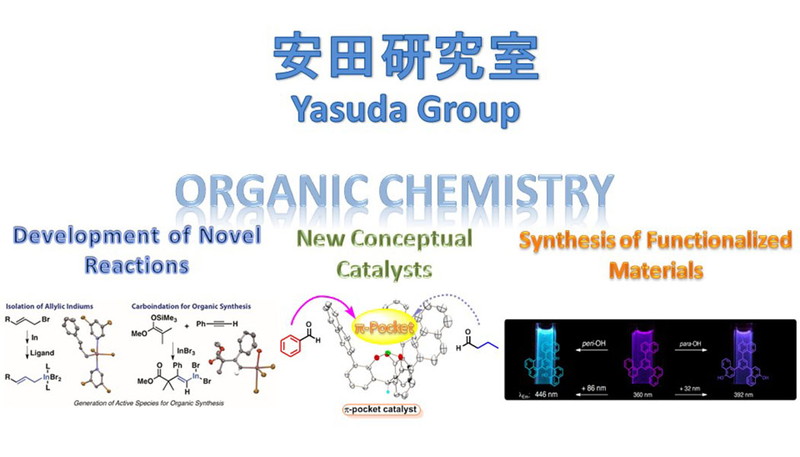
Artificial photosynthesis is a solar energy conversion technology that mimics natural photosynthesis, and considered to be one of the next big breakthroughs in the research field. Our group studies the development of functional metal complexes toward the realization of artificial photosynthesis.

Transition metal complexes serve as key players that mediate various reactions for synthesizing bioactive compounds and functional materials, and numerous transition metal complexes have been developed to date. The design of organic compounds (i.e., ligands) that support the metal center is crucial for imparting desired functions to transition metal complexes. We focus on designing original ligands and developing the synthesis and applications of transition metal complexes that maximize their external stimulus-responsive properties. We are also engaged in creating designed boron catalysts containing boron as a metalloid element and developing technologies that use crude H2.
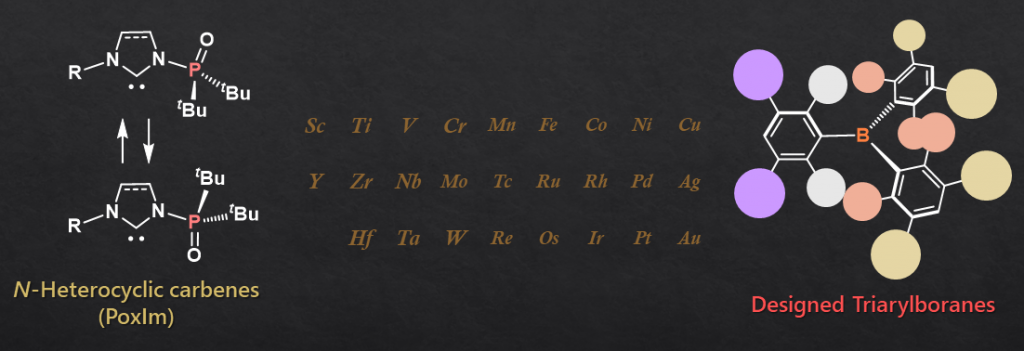
Our research interests span various aspects of organic chemistry, ranging from new reactions, new molecules, and new functions. Regarding the reaction development, our goal is to invent the synthetic methods that involve unprecedented mechanism or unusual bond transformation. We are also exploring design and synthesis of new functional complexes ligated with unique p-conjugated systems. We believe that the diversity of our research projects facilitates generating breakthrough ideas.
Representative research subjects include:
(1) Catalytic Reactions Involving Activation of Strong Chemical Bonds
(2) Unusual Reactions Using Main Group Elements
(3) Design and Synthesis of Complexes with Open-shell π-Conjugated Ligands
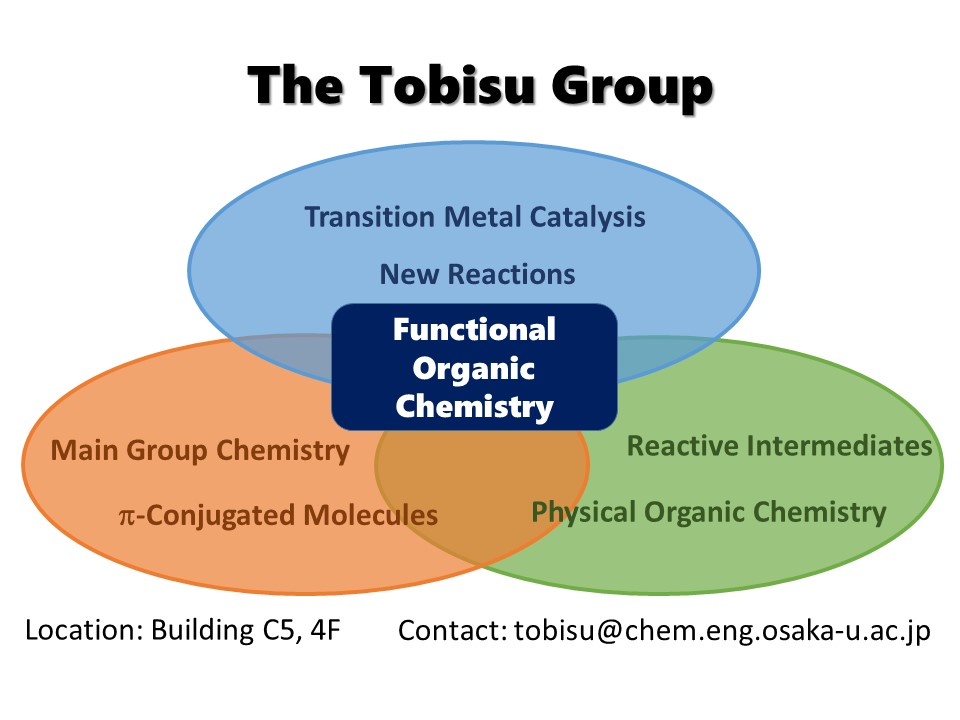
Chemical biology is an interdisciplinary research field, which focuses on elucidation of biological phenomena by utilizing “chemical tools”. These chemical tools are developed by the combinatorial use of organic chemistry, nanotechnology, and genetic engineering. In our group, we design and synthesize novel fluorescence and magnetic resonance imaging (MRI) probes that are applied to answer various biological questions. The representative examples of our chemical tools are fluorescence probes for detection of protein localization and enzymatic activity and MRI probes for in vivo imaging of cancer and gene expression. We develop new tools to give new findings that are not verified by conventional biological methods. By using these tools, we are currently studying various biological fields such as epigenetics, immunology, and cancer biology.
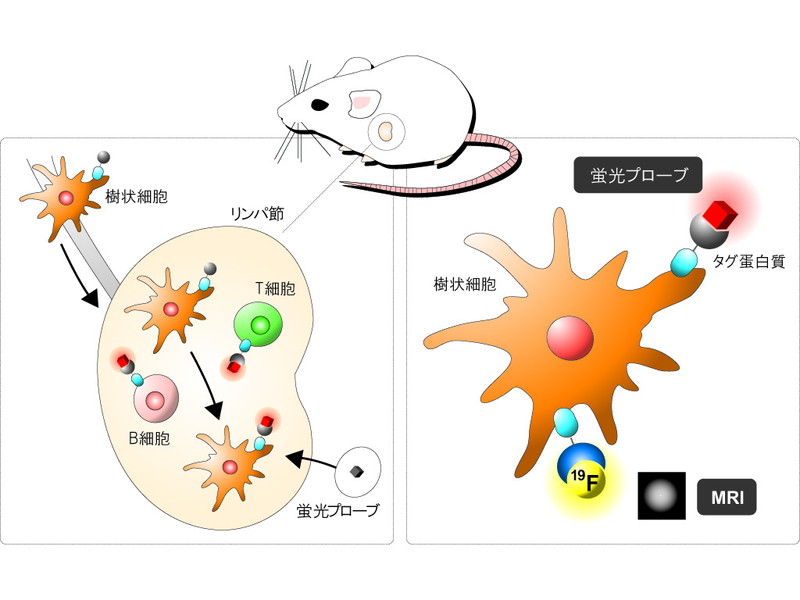
The general goal of our research is to understand enzymatic catalysis at a molecular level and develop environmentally benign bioinspired catalysts. Particular attention has focused on the redox chemistry of transition-metal reaction centers in biological systems. Our main approach involves synthetic modeling, i.e. biomimetic chemistry, including rational design and syntheses of ligands allowing formation of appropriate active site models for metalloenzymes. Enzymatic studies using advanced molecular biology techniques are also performed to develop metalloenzyme catalysts that can be applied to organic synthesis.
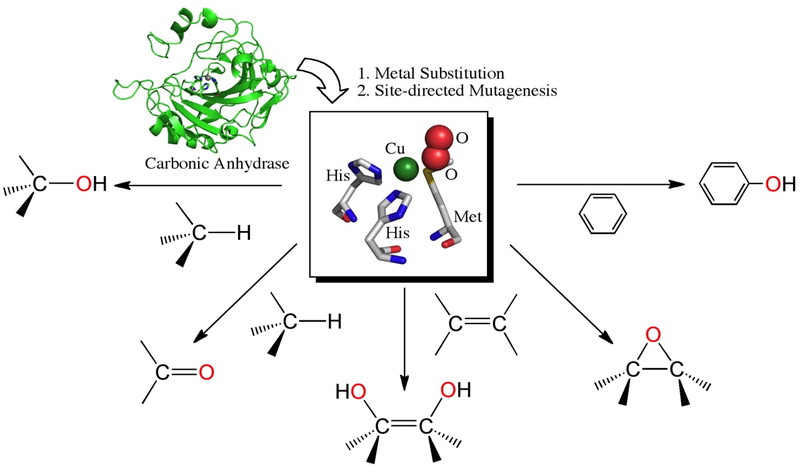
Molecular Reaction Chemistry Area
Top
